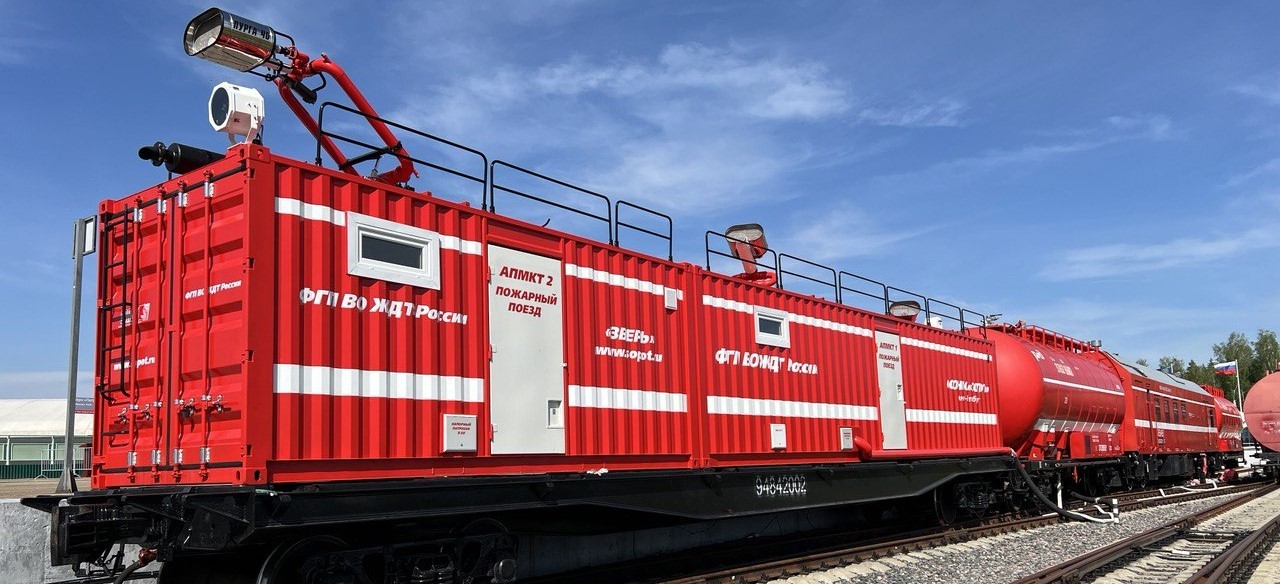Industrial and fire safety
In order to ensure the Company’s industrial and fire safety:
- the Safety First rule is observed, with safety placed above other performance indicators;
- employees receive training and improve their skills and competencies in health and safety;
- each employee is aware of their individual responsibility for compliance with health and safety principles;
- health and safety risks are managed.
Industrial safety of hazardous facilities
The industrial safety management system of Russian Railways determines the key functions and responsibilities for ensuring industrial safety at all management levels. The industrial control structure covers all management levels and ensures control over compliance with industrial safety requirements at the Company’s hazardous production facilities.
In 2023, the Company updated its standard on the Occupational Health and Safety Management System of Russian Railways.
Russian Railways operates 5,618 hazardous facilities, including 571 facilities of hazard class 3 and 5,047 facilities of hazard class 4. None of these facilities reported any accidents in 2023.
Fire safety
Russian Railways has a fire safety management system aligned with the Company’s “to‑be” state. Various units within the Company follow a unified approach to fire safety thanks to the efforts of central and regional fire safety commissions. Fire prevention activities at the Company’s facilities and rolling stock, along with fire extinguishing in the traffic area, are the responsibility of the Departmental Security Service of the Railroad Transport.
In 2023, the EMERCOM of Russia and Russian Railways took steps to draft an agreement on the key areas of cooperation in fire safety and coordination of respective efforts.
Fire trains

Fire trains are classified as part of a single public system for emergency prevention and response and are engaged by the EMERCOM of Russia in order to extinguish fires across the country. Fire trains are designed for fire extinguishing and ensuring fire safety as part of response to emergencies with hazardous cargos at facilities of structural units of Russian Railways branches, at all types of rolling stock, and in railway infrastructure areas where possible. A total of 310 fire trains are on standby 24/7. The rolling stock of fire trains is updated as part of the Fire Safety project.
In 2023, Russian Railways purchased 20 MTSO 2‑based pump wagons, which fully meet modern requirements for fire trains.
During 2023, fire trains attended 84 fires at on‑site facilities and rolling stock, 143 fires in railway infrastructure areas, 95 incidents to participate in emergency response at on‑site facilities and rolling stock, and 279 incidents attended at the request of territorial fire and rescue units of the EMERCOM of Russia to assist in extinguishing fires at facilities that are not part of the railway transportation infrastructure and natural fires.
To automate industrial safety processes at hazardous production facilities and fire safety processes, the protected objects feature Industrial Safety and Fire Safety modules running on the basis of the Unified Suite for Managing the Company’s Activities in the Field of Environmental Protection, Industrial and Fire Safety.
Introduction of state‑of‑the‑art emergency response measures
Russian Railways is a member of a single public system for emergency prevention and response and actively employs modern and advanced technologies to respond to all types of natural and man‑made threats, including:
- management system functioning at all levels (federal, regional, and site‑based) and easily adaptable to different kinds of threats, which covers government bodies, control points, communication and liaison systems and ensures successful functioning of a vertically integrated and territorially dispersed network of governance bodies;
- emergency and recovery teams with modern equipment (cranes with a lifting capacity of 150 t or more, 50 t winch heavy bulldozers, hydraulic machinery made of light metals);
- unmanned aerial vehicles with mobile video conference tools as the most fast moving means of information collection and transfer in emergency situations;
- integration of Russian Railways’ information systems with the automated information and management system of the single public system for emergency prevention and response.